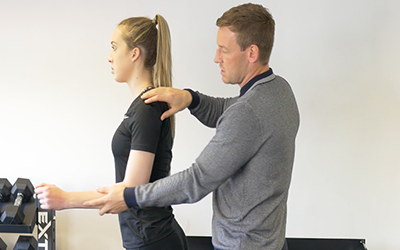Why Patients DON’T Do Their Rehab
Posted By: Andy Barker
If you do, you’re not alone.
I was on a coaching call with therapist just the other day who has just joined my New Grad Physio Membership, and she told me her biggest frustration now is patients not following her advice and rehab.
I’m sure you’ve had patients like this…
…that come back and are honest enough to tell you they haven’t been doing their home exercise programme.
Some might try being ‘nice’ by saying something like ‘I haven’t been doing them as much as I should,’ which is in other words ‘I haven’t done them at all.’
Or sometimes, patients lie and tell you they have done their rehab but given how they present and their lack of progress, its likely they haven’t.
Not only is it frustrating as a therapist, but your patients don’t improve, and you cannot progress their rehab.
But in most cases, this is NOT a patient problem.
It is actually a therapist problem and in this blog I am going to discuss the real reason patients do not complete their rehab and share with you some simple strategies you can use to make sure your patients stay on board with their rehab and complete their treatment plan.
Patients Just Don’t Understand
This is one of the biggest issues when it comes to patient adherence.
This has nothing to do with a patient being ‘lazy’ or ‘not being bothered’ but everything to do with how you explain what you are doing to your patient and why you are asking them to do it.
Simply, if patients don’t understand what is going on (their diagnosis and their problems) and how your prescribed rehab exercises are going to fix their problems, then they have every reason NOT to do it.
Think about your own practice as a therapist.
We work in an ever-evolving field and every now and then you may see or read about new ways to do things.
This might be an assessment technique, treatment method or even a new rehab exercise or protocol.
You don’t just read or see something and immediately add it to your practice.
You will try make sense of it, maybe do some additional research or reading, all so you can make a better UNDERSTANDING of whether it is useful.
Patients are no different.
They will question whether their time and effort doing your proposed rehab exercise is worth it.
And if you have not explained your findings and your treatment plan well, then there is every chance your patient will not follow your advice and their rehab plan.
They Question The Value Of What You Are Doing
Patients also need to be clear about HOW their rehab is going to help them back to work, sport, hobby or any other activity.
If they don’t understand and see value in what you are asking them to do, then they may choose not to follow your plan.
If you have not explained how their rehab is going to help them get from A to B, from injury and back to full health, then is a surprise they may not ‘Buy-In.’
Ensuring understanding and patients being able to see the value in what you are doing is not difficult and here is how you can do it…
Simple Strategies To Better Patient Buy-In
Firstly, there may need to be a shift in your mindset about what the purpose of the initial assessment.
The initial assessment has 4 main outcomes;
1) Ensure Patients Are In The Right Place > Screening Questions (Red Flags And Refer On If Needed)
2) Identify Patient Problems > Find Out WHY A Patient Has The Problems They Have?
3) Identify The Patients End Goal > WHAT Is It They Want To Get Back To?
4) Formalise A Treatment Plan > HOW You & Your Patient Are Going To Progress From Injury & Back To Full Health (Your Treatment Plan)
Many New Grad Physio’s feel like they ‘short-change’ their patients by not delivering hands-on treatment techniques and prescribing rehab in that first session.
If there is time, of course you can do this.
But not at the expense of firstly nailing the main components of that initial assessment.
Many New Grad’s rush through the initial assessment, watching the clock and being conscious that they NEED to get their hands-on to treat and give the patient rehab.
But this is a BIG mistake.
It can lead you to miss important information as part of your subjective and objective assessment and leave you rushing to explain your findings leading to poor patient understanding of their problems and their treatment plan.
At that first session, you think patients want treatment and rehab.
What they really want is for you to identify their problems and for you to lay out how you are going to get them back to the sport, activity or whatever else it is they want to do.
Once they are clear on the plan, then they will do everything you ask them to, and complete every set of every rep of each exercise you give them.
You can do this in the first treatment session and in doing so you will never have a problem with patients not doing their rehab.
Key Points
A Lack Of Patient ‘Buy-In’ Is Often Due To A Lack Of Understanding & A Lack Of Value Attached To The Treatment Plan
If Patients Don’t Understand & See HOW Your Treatment Plan Will Take Them From Injury To Their Desired Goal, Then They Won’t Do Their Rehab
Use Your Initial Assessment To Identify Your Patients Problems, Identify Their Treatment Goals & Ensure They Leave Your Clinic With A Clear Understanding As To HOW The Treatment Plan Will Help Fix Their Injury
Andy Barker
The New Grad Physio Mentor

